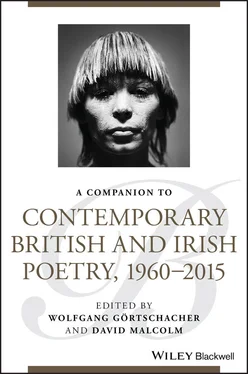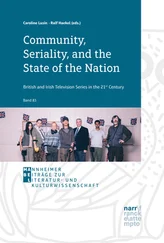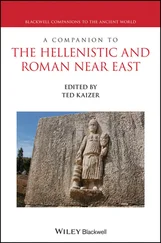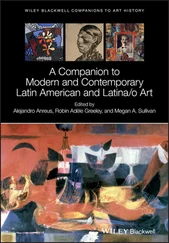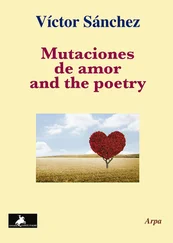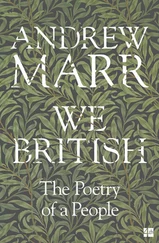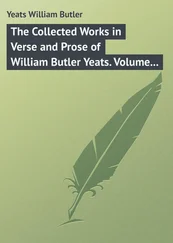The speaker in the six sections is unstable: an “I” and a “we.” Although all sections have narrative elements, there is no coherent narrative over the whole poem, and any narrative in any single section is elliptical and incomplete. Section 1 is set in British India. Section 2 refers to mountains and foothills, but whether these are those of section 1 is not clear. Similarly, the rains mentioned in section 3 may or may not be Indian rains. Are mansion, crops, and rain in section 4 those of earlier sections? Are they Indian or English? Old or modern? Section 5 shifts unambiguously to another part of the Empire, to Canada, and to another kind of weather. Section 6 with its violence may follow on from section 5, although one cannot be sure. The gate recurs here, although it is hard to see why there is a gate in a Canadian clearing.
However, there are elements of coherence in the text. The verse is not quite as disordered as it seems. The last four lines of section 4 contain two quasi‐end rhymes (“alternating / skipping,” “days / face”), and other lines end in echoes (“grounds / storms,” “machinery / dry”). The same intermittent semi‐rhyme is notable in section 6: (“shot / knots / padlock,” “all this / in this”). A certain framework is offered by the recurrent motifs of rain, gate, crops, and mansion. Action, too, occurs in central parts of the British Empire (India and Canada). Two expeditions are referred to, in sections 1 and 5.
Nonetheless, it must be acknowledged that fragmentariness and a concomitant obscurity mark the poem. History (events, accounts) is a matter of incomplete and inconclusive narratives, impressions (section 4), and reflections (section 3). Unease is recurrent: the speaker in section 1 has limited possibilities; the speaker in section 2 is “unnerved”; section 3 is entitled “The ache?”; there is a “sigh” and “pain” in section 4; there is violence and “little comfort” in section 6. There are hints of coherence (mentioned earlier), but mostly “There were complexities” (section 3) and, as the speaker has it in section 5, “I cannot work it out.” Empire—England?—is fragmented; the colonial power is sinking.
Seamus Heaney, “Requiem for the Croppies” (1966) (Heaney 1990, 12)
The title of the poem unambiguously announces a defiance of empire, and goes on to offer precisely what the title announces—a laudatory dirge for Irish rebels. Strikingly, this threnody for insurrection is enacted within a metropolitan and traditional English‐language genre, for the requiem is a sonnet, albeit one that deviates from traditional established models.
Such deviation occurs on several levels. This sonnet is a narrative sonnet, not a lyric expression of feeling. The speaker is plural, not the traditional singular one. Subject matter does not quite fit the traditional octave/sestet division. Lines 1–4 form a focused quatrain, but the next subject (the Croppies' tactics) runs from line 5 to line 9. The remaining five lines are, thus, a decapitated sestet. Lines are mostly 10 syllables long, although six lines are longer, and lines 9, 10, 11, and 14 are considerably longer. The numbers of main stresses per line are also variable (from three to six), and the last line can legitimately be read as having between four and six main stresses. The poem certainly has iambic elements, and anywhere between six and eight feet can be scanned as iambs or diambs. But six, and possibly seven, feet are trochees or ditrochees. There are several rather long feet: for example, “through reins and rider” (line 7) should probably be scanned x/x/x; “cattle into infantry” (line 8)—/xxx/xx; and “in our broken wave” (line 12)—xx/x/. Six lines end in an unstressed syllable.
Rhyme is disruptive. The rhyme scheme template itself—abab cdcd efe efe—is not that of an established sonnet template. Further, 6 out of 14 lines end in a questionable rhyme: “barley / country” (1, 3), “infantry / day” (6, 8), “cannon / thrown / coffin” (9, 11, 13), and “conclave / wave / grave” (10, 12, 14). In this last sequence, “wave / grave” is a full rhyme, but “conclave” rhymes anisobarically with both.
The poem is an elegy for rebellion and a smack in the face to established authority. The sonnet tradition (high status, metropolitan, relatively rigid) is appropriated and undermined, perhaps by a folk tradition with its narrative celebration of outlaws and rebels and its freedom with rhyme. Like Harwood, and not like Larkin, Heaney is unambiguous about empire and history.
Ted Hughes, “Crow Tyrannosaurus” (1974) (Hughes 1974, 13–14)
Like all the texts in Crow , this poem has a savage subject matter, the slaughter‐permeated pulse of “Creation.” Crow is a brutish part of this, an avian tyrannosaurus rex. The text is appropriately marked by a violent irregularity. Line length varies—from 3 syllables to 13. The numbers of main stresses per line vary greatly too—from one to five—although, in fact, lines with similar numbers of stresses do cluster in places: for example, in stanza 6 where three‐stress lines enclose a two‐stress one. There is no rhyme, and no metrical regularity. Indeed, beyond noting the numbers of main stresses per line and their variability, there is probably no point in attempting a traditional metrical analysis of the poem. Stanzas 8 and 9 are set out to emphasize fracture. Fixed form has been rejected. It seems a “shapeless cry” (line 12).
But, for all that, there is a surprising degree of regularity in the text. All the first seven stanzas have four lines, and stanzas 8–10 can be seen as retaining something of a four‐based shape: stanzas 8 and 9 together make up four lines, and stanza 10 consists of four phrasal units set out separately. Although the text does not rhyme, there is at least local phonological orchestration. Note the recurrence of /k/ sounds in stanza 1, and of /d/ and /b/ sounds in stanza 4. Note, too, the recurrence of related vowel sounds—/æ/, /ɛ:/, /&ip.iscp;/, and /&ip.iscp;:/—in the last line in stanza 2. There is extensive lexical repetition—“sorrow,” “body,” “weeping,” “Alas,” “grubs,” “stabbed.” There is certainly syntactic parallelism: for example, stanzas 2 and 3. Stanza 7 adopts a parallel “And” structure. Stanzas 8 and 9 are syntactically parallel, and also repeat the same lexis (“weeping” and “stabbed”). Further, order is created by the marked presence of homeoteleuton in the poem: “ing” endings are everywhere in the text, and stanza 10 comes near to rhyming with its repeated “ness” suffix.
The logical coherence and cohesion of the poem is also an orderly element in it. Stanza 1 introduces creation and Crow. Stanzas 2–5 show animal life and human life as death‐bringing. In stanza 6, Crow reflects on all the elements mentioned earlier. Stanza 7 begins with a contradictory “But,” and stanza 10 opens with a consequential “Thus.”
The shapeless “blort” (line 16) that the poem seems at first sight, and, at a certain level, is, is modified by a strong ordering and coherence, by kinds of traditional shaping. The echoes of biblical free verse also give the text a somewhat ordered and traditional quality. But it is the order of savagery, the coherence of stabbing. However, the tensions in the poem's technique might alert the reader to the irony in the text's title. A crow is not a tyrannosaurus. Hyperbole is at play here (as it is in so many of Hughes's beast poems).
Geoffrey Hill, “Mercian Hymns XXV” (1971) (Hill 2006, 85)
Mercian Hymns consists of 30 short prose poems. They center on the person and deeds of the historical, but almost legendary, Anglo‐Saxon king Offa, on the childhood of the modern speaker, and on the experiences of his relatives in the semi‐industrial past. These are connected by motifs of digging and lost and recovered artifacts, by physical history, by memory, and by cruelty and suffering. Hymn xxv contains no reference to Offa, but it belongs wholly within the collection because it involves a recovery of the fragmented past.
Читать дальше
